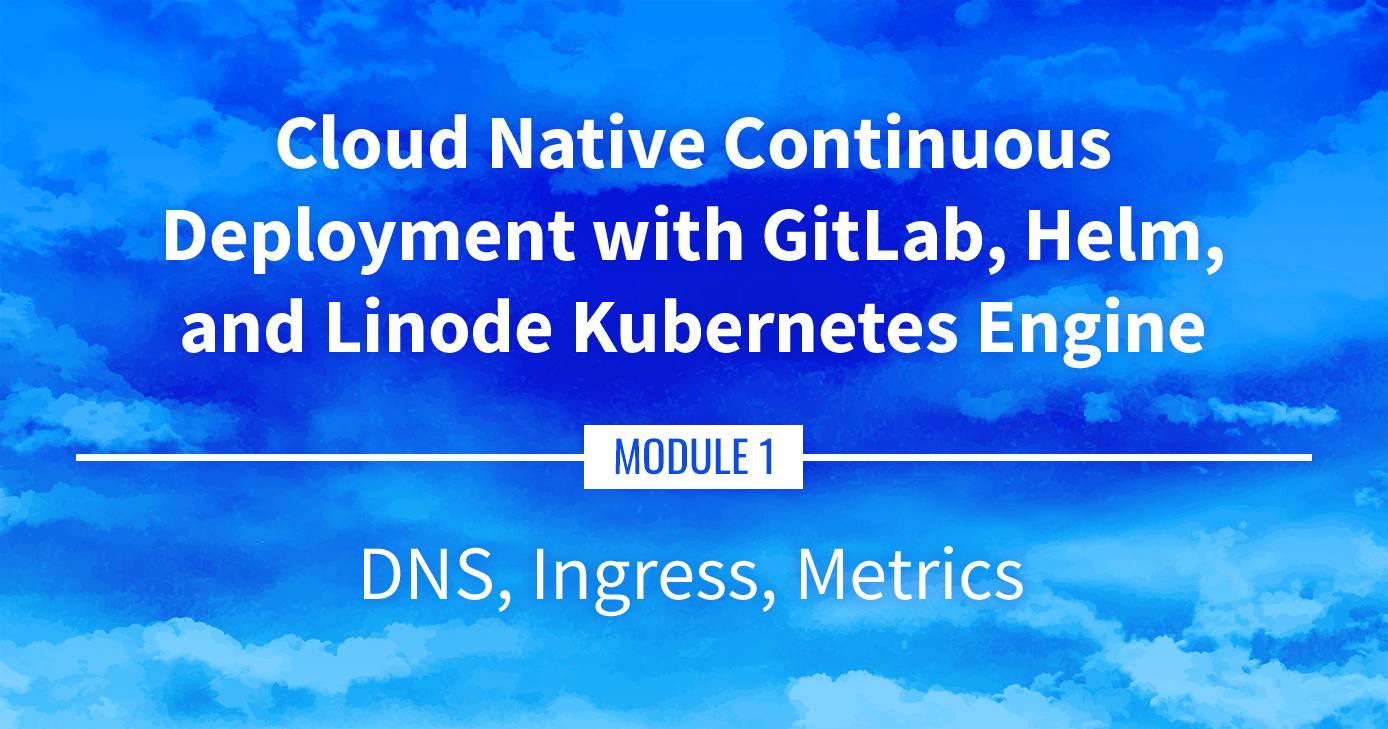Product docs and API reference are now on Akamai TechDocs.
Search product docs.
Search for “” in product docs.
Search API reference.
Search for “” in API reference.
Search Results
results matching
results
No Results
Filters
Building a CD Pipeline Using LKE (Part 6): DNS, Ingress, and Metrics
Traducciones al EspañolEstamos traduciendo nuestros guías y tutoriales al Español. Es posible que usted esté viendo una traducción generada automáticamente. Estamos trabajando con traductores profesionales para verificar las traducciones de nuestro sitio web. Este proyecto es un trabajo en curso.



Watch the Presentation: Register to watch this workshop, free of charge.
DNS, Ingress, and Metrics
The next steps are to access our sample application over a domain (DNS), setup an Ingress Controller as a load balancer / reverse proxy, and collect metrics on our application. This guide provides an overview of these components, though each of them will be discussed in greater detail within Module 2.
Navigate the Series
- Main guide: Building a Continuous Deployment Pipeline Using LKE
- Previous section: Part 5: Accessing Internal Services
- Next section: Part 7: Managing Stacks with Helm
Presentation Text
Here’s a copy of the text contained within this section of the presentation. A link to the source file can be found within each slide of the presentation. Some formatting may have been changed.
DNS, Ingress, Metrics
- We got a basic app up and running
- We accessed it over a raw IP address
- Can we do better? (i.e. access it with a domain name!)
- How much resources is it using?
DNS
- We’d like to associate a fancy name to that LoadBalancer Service (e.g.
nginx.cloudnative.party→A.B.C.D)- option 1: manually add a DNS record
- option 2: find a way to create DNS records automatically
- We will install ExternalDNS to automate DNS records creation
- ExternalDNS supports Linode DNS and dozens of other providers
Ingress
- What if we have multiple web services to expose?
- We could create one LoadBalancer Service for each of them
- This would create a lot of cloud load balancers (and they typically incur a cost, even if it’s a small one)
- Instead, we can use an Ingress Controller
- Ingress Controller = HTTP load balancer / reverse proxy
- Put all our HTTP services behind a single LoadBalancer Service
- Can also do fancy “content-based” routing (using headers, request path…)
- We will install Traefik as our Ingress Controller
Metrics
- How much resources are we using right now?
- When will we need to scale up our cluster?
- We need metrics!
- We’re going to install the metrics server
- It’s a very basic metrics system (no retention, no graphs, no alerting…)
- But it’s lightweight, and it is used internally by Kubernetes for autoscaling
What’s next
- We’re going to install all these components
- Very often, things can be installed with a simple YAML file
- Very often, that YAML file needs to be customized a little bit (add command-line parameters, provide API tokens…)
- Instead, we’re going to use Helm charts
- Helm charts give us a way to customize what we deploy
- Helm can also keep track of what we install (for easier uninstall and updates)
This page was originally published on